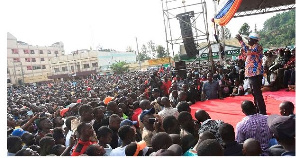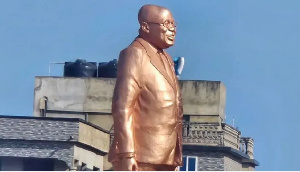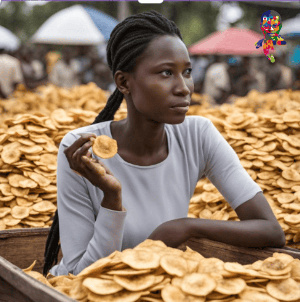Africa News of Sunday, 12 March 2023
Source: theeastafrican.co.ke
Hunger and high cost of living give Raila fuel for mass action
Mass protests called by Kenya’s opposition pose a new national security threat for President William Ruto, whose administration is already under mounting pressure to tackle a high cost of living and impact of a prolonged drought that has left about 5.4 million people facing hunger in the next three months.
Opposition leader Raila Odinga on Thursday announced a programme of mass action, including civil disobedience and demonstrations, to protest alleged fraud in the 2022 elections that propelled Ruto into power and demand electoral reforms ahead of the 2027 polls.
Mr Odinga also cited the president’s perceived control of parliament and the Judiciary and ethnically skewed public service appointments among their grievances.
The veteran opposition leader, who addressed a tense press conference clad in combat-type gear similar to the Roosevelt’s Rough Riders uniform worn by a US volunteer force in the 1898 Spanish-American War, also unveiled a resistance movement dubbed the Movement for the Defence of Democracy (MDD).
Maroon berets
MDD’s youthful members have appeared at recent anti-government rallies donning maroon berets, possibly inspired by the defiant red-beret pressure group behind Ugandan opposition leader Robert Kyagulanyi, popular as Bobi Wine, who is challenging Yoweri Museveni’s 37-year rule.
Mr Odinga maintains that the mass action will be peaceful and lawful and the Kenyan government has yet to issue a statement directly addressing his latest move, even as the opposition leader Friday stepped up his anti-government rhetoric at a public rally in Migori in western Kenya.
The first day of the demonstrations Friday went down largely peacefully in other western Kenya towns of Kisumu and Mbale, where Mr Odinga’s ODM party enjoys considerable following, with police avoiding confrontations with the protestors.
But remarks by the Interior Cabinet Secretary Kithure Kindiki on Thursday, enhanced police activity around some government installations in recent days and new appointments by the National Security Council suggest that the government is anticipating trouble and treating the unfolding political tension as a significant national security concern.
Protected areas
Prof Kindiki, while addressing a recent incident where Mr Odinga was blocked from entering the Directorate of Criminal Investigations headquarters to show solidarity with former Interior minister Fred Matiang’i, warned of firm, ruthless and decisive action against anyone who tries to forcibly access protected areas or security facilities.
On Wednesday, when a 14-day ultimatum earlier issued by the opposition leader for Ruto to address their grievances or face mass action lapsed, police erected roadblocks around the State House in Nairobi and the State Lodge in Kisumu.
While a march to State House is widely thought unlikely, despite the rhetoric at recent opposition rallies, the political and economic environment makes mass protests not much less of a tinderbox for the country.
Poll dispute
Bitter falling-out from the disputed outcome of last year’s presidential election among Kenya’s political elite left the country badly polarised.
As part of his efforts to consolidate power, Ruto, upon his inauguration as Kenya’s fifth president in September last year, moved to poach opposition MPs to the government side to cement his control over Parliament.
In an unprecedented move by a Kenyan president, he has been seen to go after his predecessor Uhuru Kenyatta by targeting his family business network.
He has also ruled out talks with the opposition over electoral reforms.
But Ruto’s power manoeuvres and intransigence have also ended up forging a formidable opposition alliance against his government outside Parliament led by a wealthy former president and a veteran opposition leader who cut his political teeth in the country’s anti-dictatorship trenches of the 1990s.
Entertainment










